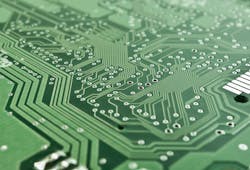Enhancing materials for hi-res patterning to advance microelectronics
UPTON, N.Y., - To increase the processing speed and reduce the power consumption of electronic devices, the microelectronics industry continues to push for smaller and smaller feature sizes. Transistors in today's cell phones are typically 10 nanometers (nm) across—equivalent to about 50 silicon atoms wide—or smaller. Scaling transistors down below these dimensions with higher accuracy requires advanced materials for lithography—the primary technique for printing electrical circuit elements on silicon wafers to manufacture electronic chips. One challenge is developing robust "resists," or materials that are used as templates for transferring circuit patterns into device-useful substrates such as silicon, writes Ariana Manglaviti for Brookhaven National Laboratory. Continue reading original article
The Intelligent Aerospace take:
August 27, 2019-Manglaviti explains that scientists from the Department of Energy's Center for Fuctional Nanomaterials at Brookhaven National Laboratory have published a study noting that they developed a way to use infiltration synthesis that combine organic polymer poly(methyl methacrylate), or PMMA, with inorganic aluminum oxide to create resists.
"Instead of taking an entirely new synthesis route, we used an existing resist, an inexpensive metal oxide, and common equipment found in almost every nanofabrication facility," said first author Nikhil Tiwale, a postdoctoral research associate in the CFN Electronic Nanomaterials Group.
The study could interest anyone in the field of microelectronics.
Related: DDC enhances position in rad-hard space electronics market with Maxwell acquisition
Related: Lockheed Martin to provide flight computers for MC-130J special-ops aircraft
Jamie Whitney, Associate Editor
Intelligent Aerospace
